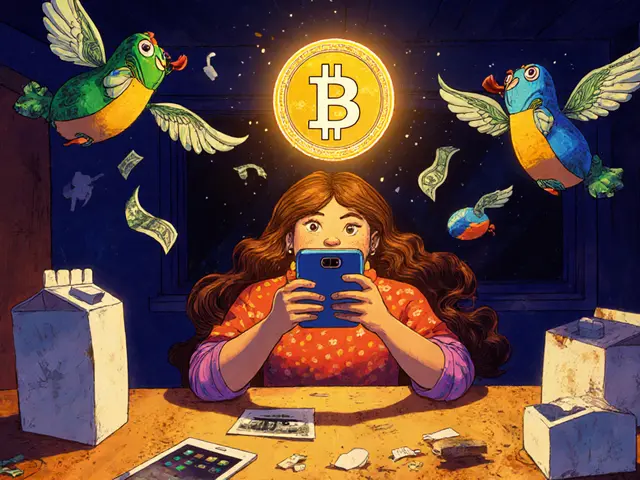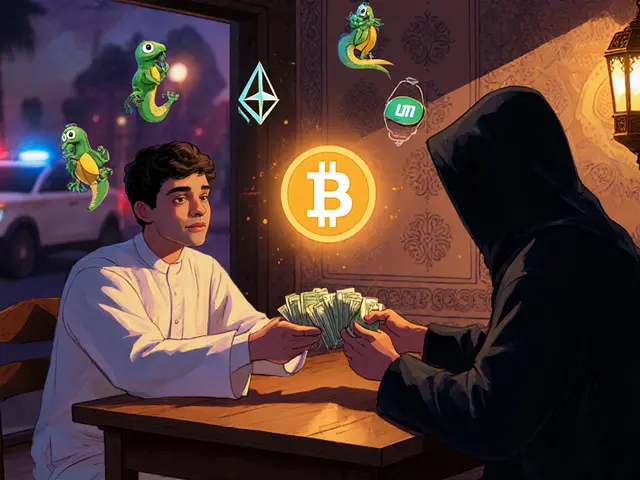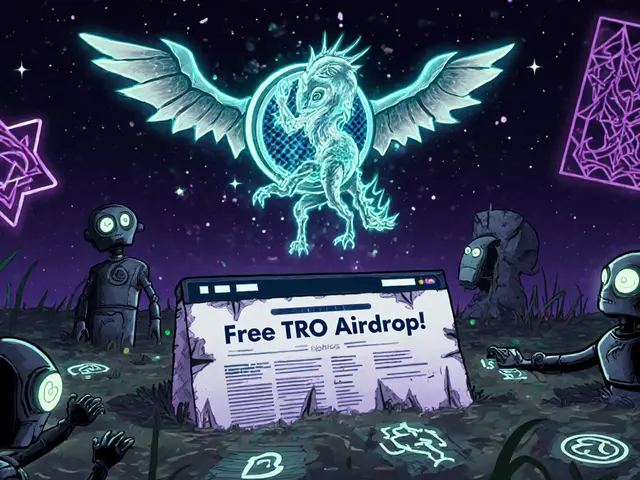P2P Crypto Trading Fee Calculator
See exactly how much fees you'll pay for different trade amounts on Russian P2P platforms. Fees shown include trading fees only (not payment processing fees).
Trade Amount
Platform Comparison
Fees shown are trading fees only. Payment processing may have additional costs.
- Bybit 0.1% fees
- MEXC 0% maker / 0.02% taker
- Bitget 0.1% fees
- KuCoin 0.1% fees
- HTX 0.1% fees
Your Estimated Fees
Total Fees
0 RUB
Net Amount Received
0 RUB
Platform Risk: Always keep your crypto in a hardware wallet like Ledger or Trezor.
Payment Risk: Wait for rubles to clear in your account before releasing crypto.
Calculate your fees
Enter an amount and select a platform to see fee estimates
How P2P Crypto Trading Works in Russia Today
In Russia, buying and selling cryptocurrency through traditional exchanges became nearly impossible after 2022. Banks blocked crypto-related transactions. Foreign platforms like Binance and OKX pulled out of the Russian market. But people still needed a way to trade Bitcoin, Ethereum, and USDT for rubles. That’s where P2P trading stepped in.
P2P means peer-to-peer. Instead of going through a bank or a centralized exchange, you trade directly with another person. The platform acts like a middleman-it holds your crypto in escrow until you get paid in rubles. Once the payment clears, the platform releases the crypto to the buyer. It’s simple, but it’s the only way millions of Russians can access crypto today.
The system works because of stablecoins, especially USDT. Most users buy USDT first using a bank card or e-wallet, then list it for sale on P2P platforms in exchange for rubles. The rubles land directly in their Sberbank, Tinkoff, or MIR account. No intermediaries. No delays. Just direct transfers.
Top P2P Platforms for Russian Users in 2025
Not all crypto platforms still work in Russia. Binance and OKX have completely shut down RUB trading. But five others are active, reliable, and growing.
Bybit is the leader. In October 2025, it handled over $27 million in daily RUB trades. It has a full Russian interface, customer support in Russian, and supports more than 2,000 cryptocurrencies. You can deposit rubles via bank transfer, Sberbank cards, Tinkoff cards, Advcash, and even Yandex Money. Trading fees are just 0.1% for spot trades. It also offers futures, staking, and copy trading-making it a one-stop shop for serious traders.
HTX P2P comes second with $7.7 million in daily volume. It supports 1,351 active ads and offers RUB deposits through SBP (Russia’s Fast Payment System), bank cards, and e-wallets. Its interface is clean, and it’s known for fast payouts.
MEXC is the altcoin king. With over 2,800 cryptocurrencies available, it’s where Russian traders go to find new coins before they explode in price. MEXC charges 0% maker fees and only 0.02% taker fees-among the lowest in the industry. It accepts rubles via cards, Payeer, SBP, and Yandex Money. It also offers up to 500x leverage on futures and runs daily airdrops, keeping users hooked.
KuCoin has 900+ coins and $3.2 million in daily RUB volume. It’s simpler than Bybit or MEXC, but it’s trusted. The catch? You can only deposit rubles using credit or debit cards. Bank transfers and SBP aren’t supported. Still, its 0.1% fee structure and solid reputation make it a safe pick for beginners.
Bitget is growing fast. It got its VASP license in Bulgaria in February 2025, which means it’s officially compliant with European rules. That gives it more stability. It supports RUB via cards, SBP, and e-wallets. Fees start at 0.1% for spot trades, and you can save more by paying with BGB tokens. Its copy trading feature lets new users mirror experienced traders’ moves-useful if you’re not sure how to pick coins.
How Payment Methods Are Hidden Under Sanctions
Because of international sanctions, Russian platforms can’t openly say “Sberbank” or “Tinkoff” in their interfaces. So they use color codes.
- Green card = Sberbank
- Yellow card = Tinkoff (now called T-Bank)
- Blue card = Raiffeisenbank
- Red card = OZON Bank
- Gray card = MIR cards
These colors help users quickly identify which bank account they’re sending money to. It’s not perfect, but it’s the workaround that keeps the system running. Always double-check the account number matches the seller’s name. Scammers sometimes use fake screenshots to trick people into sending money to the wrong account.

The Real Risks You Can’t Ignore
P2P trading isn’t risk-free. Here’s what actually goes wrong-and how to avoid it.
Counterparty risk is the biggest one. Someone might send you a payment screenshot that looks real, but the money never clears. Or they might claim they never got the crypto, even though you sent it. Always wait for the rubles to appear in your bank account before releasing the crypto. Never trust a “fast payment” claim. Use platforms with escrow and check the seller’s history. Look for completion rates above 95% and at least 50+ completed trades.
Bank account freezes happen. If your bank sees a large ruble deposit from a crypto seller, they might flag it as suspicious. Your account could be frozen for weeks while they investigate. That’s why it’s smart to keep small, regular trades. Avoid sending or receiving more than 100,000 RUB in one go unless you’re prepared for delays.
Price swings can cost you money. If you list 1 BTC for 4.5 million RUB, but Bitcoin drops 5% in 10 minutes, you’re stuck. The buyer might back out, or you might lose money if you’re forced to sell at a lower price. Use limit orders. Set your price slightly above market rate, and don’t rush. Wait for buyers who match your terms.
Platform risk is real too. What if Bybit gets blocked tomorrow? Or MEXC shuts down its RUB service? Always keep your crypto in a personal wallet-not on the exchange. Use hardware wallets like Ledger or Trezor. If the platform goes down, your coins are still safe.
Security Tips That Actually Work
Here’s what you need to do to stay safe:
- Turn on two-factor authentication (2FA) using an authenticator app like Google Authenticator or Authy. Never use SMS.
- Verify every payment before releasing crypto. Check the bank name, account number, and recipient name.
- Never click links in messages. Phishing scams targeting Russian P2P traders are common. Always type the platform URL yourself.
- Use a separate bank account for crypto trades. Don’t link your salary account to P2P.
- Keep screenshots of every trade, including payment confirmations and chat logs. If a dispute happens, you’ll need proof.
Also, avoid trading with users who have no transaction history or low reputation scores. Even if the price looks amazing, it’s not worth the risk.

What’s Next for P2P Crypto in Russia?
The market is getting smarter. Platforms are adding features like built-in wallets with RUB on-ramps (Bitget Wallet, for example), automated trading bots, and DeFi staking options. More users are moving away from just trading and into earning interest on their crypto.
Regulators are watching. The Russian Central Bank still doesn’t recognize crypto as legal tender. But they’re not banning P2P trading either. Instead, they’re focusing on stopping money laundering. That’s why platforms are now requiring stricter ID checks and limiting high-volume trades without verification.
In 2026, expect more platforms to get licensed abroad-like Bitget did in Bulgaria. That gives them legal cover and makes them more trustworthy. We’ll also see better dispute systems, faster payment confirmations, and maybe even integration with Russia’s digital ruble pilot program.
For now, P2P trading is the only viable option. It’s not perfect. But for millions of Russians, it’s the only bridge between their rubles and the global crypto economy.
Frequently Asked Questions
Is P2P crypto trading legal in Russia?
Yes, trading crypto peer-to-peer is not explicitly illegal in Russia. However, the Russian Central Bank does not recognize cryptocurrency as legal tender. You can buy and sell crypto using P2P platforms, but you can’t use it to pay for goods or services legally. Banks may freeze accounts linked to crypto trades, so there’s regulatory gray area. The government tolerates P2P trading because it’s hard to stop-but it’s not officially endorsed.
Why can’t I use Binance or OKX P2P in Russia anymore?
Binance and OKX stopped offering Russian ruble (RUB) trading in 2023 due to international sanctions and pressure from Western regulators. Their compliance teams couldn’t guarantee that RUB transactions wouldn’t violate sanctions rules. As a result, they removed RUB payment options and blocked Russian users from accessing P2P services. That’s why Bybit, MEXC, and others filled the gap-they adapted their systems to work within Russia’s financial restrictions.
Which platform has the lowest fees for P2P trading in Russia?
MEXC has the lowest fees: 0% maker fees and 0.02% taker fees on spot trades. Bybit and KuCoin charge 0.1%, while Bitget charges 0.1% unless you pay with BGB tokens, which can reduce fees further. For futures trading, MEXC also leads with 0.02% taker fees. If you’re doing high-volume trades, MEXC saves you the most money over time.
Can I get my money back if a buyer scams me on P2P?
Yes, but only if you follow the platform’s rules. All major P2P platforms use escrow. The crypto is held until the payment is confirmed. If the buyer claims they didn’t pay, you can open a dispute. The platform will review bank statements and chat logs. If you released crypto before payment cleared, you have no protection. Always wait for the rubles to appear in your account. Never trust screenshots or payment receipts alone.
Should I keep my crypto on the P2P platform?
No. Never keep large amounts of crypto on any exchange, including P2P platforms. If the platform gets hacked, frozen, or shut down, you could lose everything. Transfer your crypto to a personal wallet-preferably a hardware wallet like Ledger or Trezor. Only keep what you’re about to trade on the platform. It’s the only way to truly own your assets.
What’s the safest payment method for P2P in Russia?
SBP (Fast Payment System) is the safest because it’s instant, traceable, and tied to official bank accounts. Bank transfers are also reliable. Avoid cash deposits, e-wallets like Payeer or Advcash unless you know the recipient well-they’re harder to trace and more prone to fraud. Always use card payments linked to your own verified bank account. Never use someone else’s card or account.











18 Comments
This is absolute FIRE 🔥 Russia turned sanctions into a crypto revolution and nobody saw it coming. P2P isn't just surviving-it's thriving like a weed through concrete. Bybit handling $27M daily? That's not a platform, that's a financial tsunami. I'm not just impressed, I'm inspired. This is the future of finance: decentralized, defiant, and dripping with ingenuity.
MEXC has the lowest fees 0% maker 0.02% taker and you're still using Bybit why
You call this innovation? This is just economic desperation dressed up as entrepreneurship. Russia’s entire financial system is a patched-together dumpster fire and you're celebrating it like it's a TED Talk. The fact that people need to use color-coded bank icons to avoid sanctions is pathetic. This isn't freedom-it's survival with a side of delusion.
The real question isn't which platform has the lowest fees-it's whether we've surrendered the soul of decentralization to the altar of pragmatism. When you trade USDT for rubles through a color-coded card system, are you truly free? Or are you just a ghost in the machine of a state that refuses to die? The blockchain was meant to liberate us from banks-but now we're worshipping them through proxy symbols. Irony has a new face, and it's wearing a gray MIR card.
People still get scammed on P2P all the time trust me i seen it happen too many times just use SBP and dont be stupid
I love how this community is quietly building something beautiful out of broken systems. The fact that Russians have created their own crypto ecosystem without foreign support? That’s resilience. I don’t agree with everything here, but I respect the ingenuity. Maybe the real lesson isn’t about crypto-it’s about how humans adapt when the rules change.
What strikes me most is the poetic resilience embedded in this system. The color-coded bank icons-green, yellow, blue-are not merely functional; they are modern hieroglyphs of survival. A civilization, cut off from global financial arteries, has learned to pulse with its own rhythm. This is not just trading-it is cultural reclamation through code. The blockchain, once a symbol of Western libertarianism, has become the quiet cathedral of Russian economic endurance.
Let me guess-next they’ll say MIR cards are ‘decentralized’ and that SBP is ‘censorship-resistant’. Wake up. This isn’t crypto freedom. This is a sanctioned black market with a UI. Every ‘platform’ here is just a front for capital flight. The Central Bank tolerates it because they can’t stop it. Not because they approve. This isn’t innovation-it’s evasion with a tech bro veneer.
The structural ingenuity displayed here is nothing short of remarkable. While international frameworks attempt to constrain financial autonomy, local actors have engineered a parallel system grounded in practicality and adaptability. The integration of SBP, the evolution of escrow protocols, and the strategic licensing of platforms abroad reflect a sophisticated response to systemic pressure. This is not a loophole-it is a new paradigm.
So people just trade crypto for rubles now? That’s wild. I thought crypto was supposed to get rid of banks. But I guess if it works, it works.
MEXC is the real MVP for altcoins and SBP is the only way to go no cap
This is all a psyop. The Russian state is using P2P to launder money and bypass sanctions. Every ‘user’ is a node in a state-run crypto pipeline. The ‘escrow’ is a lie. The ‘platforms’ are controlled. The ‘fees’ are just a distraction. You think you’re free? You’re just another data point in a surveillance economy. 💀
I just can’t believe how beautiful this is-people are building a financial utopia out of the ashes of sanctions! The color-coded cards? Genius! The fact that someone in Vladivostok can trade USDT for rubles via Yandex Money while a guy in Kaliningrad uses SBP? It’s like a living, breathing network of human connection! And MEXC’s 0.02% taker fee? That’s not a number-that’s a promise of hope! I’m tearing up just thinking about it!
Oh wow, so now we're giving medals to people who trade crypto because their government broke their banking system? How brave. How noble. How… 2023. I'm sure the Central Bank is just sitting back sipping tea while you all play financial charades with color-coded cards. Next you'll tell me the digital ruble is 'democratic'.
Honestly? I’m just here for the vibe. People are figuring it out. No big banks. No middlemen. Just folks trading crypto like it’s 2009 all over again. Doesn’t matter if it’s messy-what matters is it’s working. Keep it real. Keep it simple.
This is a Trojan horse. The entire system is engineered by the Russian state to circumvent Western sanctions and funnel capital into offshore shell companies. The color codes? A psychological trick to normalize illicit activity. The ‘escrow’? A surveillance tool. Every trade is logged, tracked, and weaponized. This isn’t freedom-it’s the most sophisticated financial control mechanism ever devised. You’re not trading crypto-you’re surrendering your identity.
This is wild but also kinda beautiful 🤝 people just making it work. SBP for the win, MEXC for the alts, and never trust a screenshot. Stay safe out there!
The fact that users have created this entire ecosystem under such pressure is a testament to human resilience. I appreciate how platforms adapted with localized payment methods and compliance frameworks. It’s a quiet revolution-one that doesn’t need applause, just recognition.